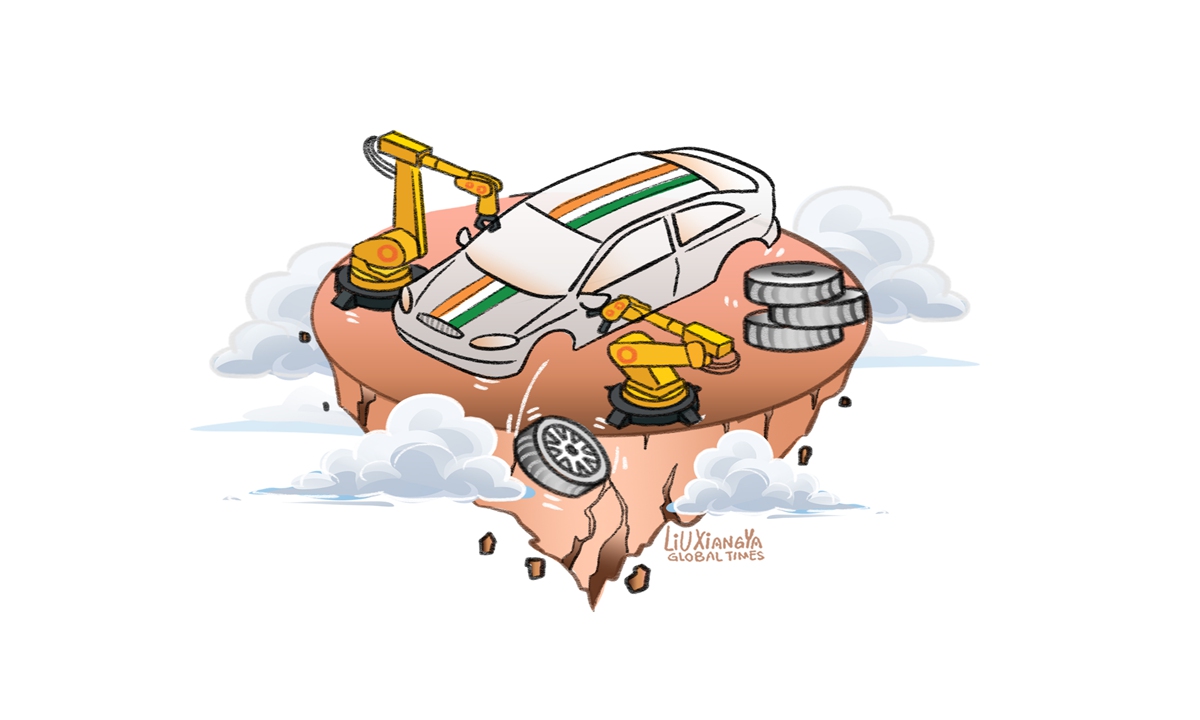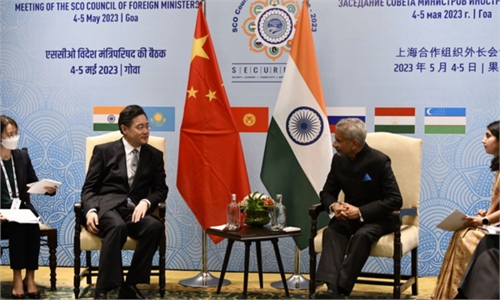
Illustration: Liu Xiangya/Global Times
RC Bhargava, chairman of Maruti Suzuki India, the country's leading passenger car maker, is one of the few who fearlessly expresses his views. He said India will surely become the top automobile manufacturer in the next five years, making the country "a very large exporter of cars," the Hindu Business Line reported on Sunday.The automotive industry is a highly competitive market. In response to Bhargava's bold words, we would like to say India is welcome to join global competition which has become increasingly fierce. In a fully competitive market, India must get ready to meet new challenges, and continuously improve its competitiveness in attracting global auto manufacturers, including those coming from China.
India has reportedly beaten Japan to become the world's third-largest vehicle market in 2022 after China and the US, selling more than 4.25 million vehicles. Citing Transport Minister Nitin Gadkari, the Hindu Business Line said India could become the world's largest automobile market in the next five years, with a likely rapid proliferation of electric cars and vehicles run on flex-fuel engines. No matter whether Gadkari's words can become a reality or not, there is little doubt that India's huge market is attractive to global manufacturers. However, if India wants to transform its market potential into manufacturing capability, the country still has a long way to go before reaching this goal.
Currently, some Western media outlets are seeking to hype up so-called China-India competition, saying global manufacturers seeking to diversify supply chains are looking at India as an alternative to China in terms of setting up a manufacturing base. This has given rise to the so-called "China Plus One" strategy, a business approach that encourages investors to diversify their investments by not only investing in China, but opting for a more diverse portfolio through investments in a variety of Southeast and South Asian countries.
Even if, as some Western media have claimed, some global manufacturers choose this strategy, it does not mean their production capacity will be completely shifted from China to other countries. Instead, China is expected to play an important role in their supply chains under the "China Plus One" strategy. In the process, the Asian industrial chain will be more closely integrated. It means India needs to further integrate into Asian industrial chain and strengthen industrial cooperation with China.
Some statistics have showed China remains the world's largest automotive manufacturing country and automotive market since 2009. Rising Chinese new-energy vehicle (NEV) players such as NIO, XPeng and Li Auto, generally called the "new force" in challenging Tesla, have become an important participant in the global market. If India wants to make itself the top automobile manufacturer in the world, the country must make itself an ideal investment destination for global automakers, especially Chinese NEV brands.
It remains questionable whether or not India can realize its ambitious goal of accommodating top auto manufacturers, as there remain serious challenges and bottlenecks in the development of the country's manufacturing sector. It is necessary for India to remove the roadblocks that are severely hindering the country's manufacturing development.
India continues to lag behind in infrastructure construction, both traditional hard infrastructure, including roads, bridges and railways, and soft infrastructure such as digital technology and climate change. For instance, one of the biggest challenges manufacturers in India face is inefficient networks due to many industrial plants not having access to sufficient network and connectivity.
Another huge challenge India faces within its manufacturing sector is the lack of a skilled workforce. Amid the increasing automation of the manufacturing sector, India also spends the lowest in the world on research and development. Moreover, an inefficient bureaucratic system has long been a drag on the development of India's manufacturing industry.
The most important thing is still to build a stable, fair, transparent and predictable business environment. India should end its crackdown on some individual Chinese companies and rebuild Chinese companies' investment confidence in India.
The author is a reporter with the Global Times. bizopinion@globaltimes.com.cn



